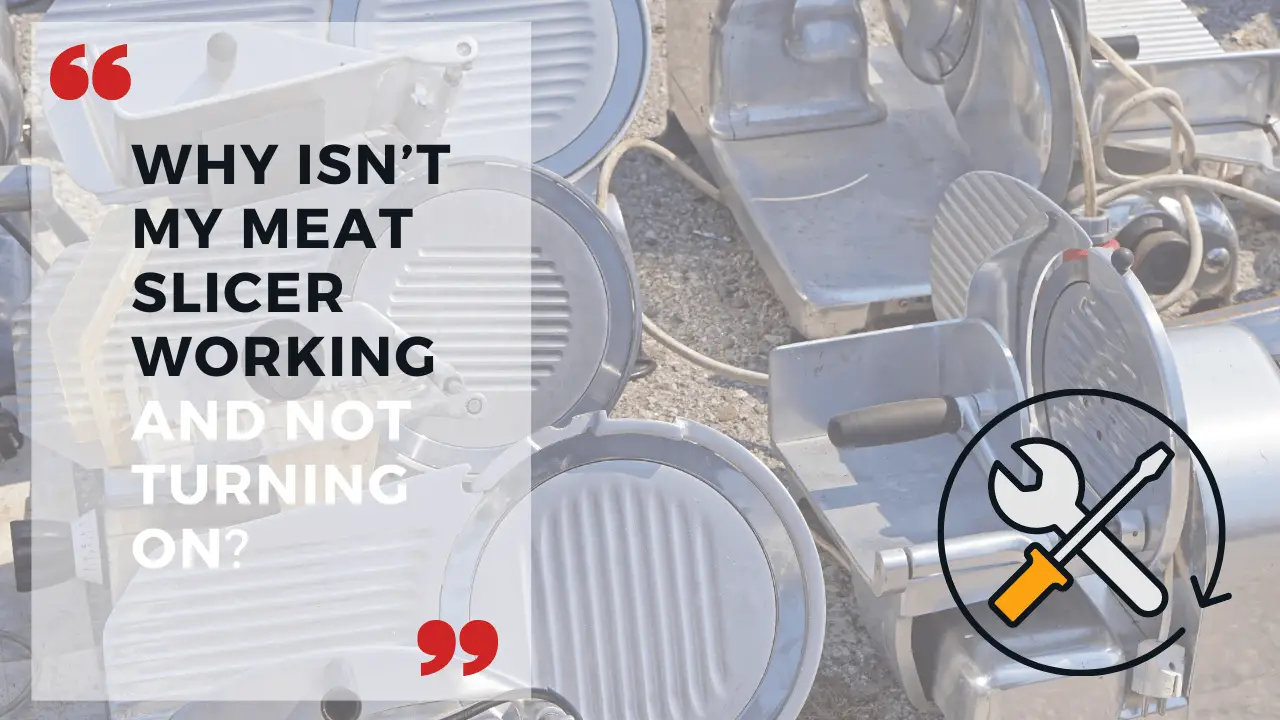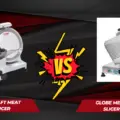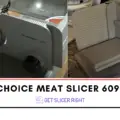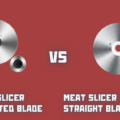Meat slicers are common in the kitchen, from commercial deli operations to home kitchens. As with any machine, however, they are prone to various problems that can affect its performance. Common meat slicer problems include rusting blades, uneven cuts, and clogs. Rusting blades occur when the slicer is exposed to moisture or wet foods. Dry the blade after each use to prevent rust and store it in a cool, dry place. Dull blades or inaccurate settings can cause uneven cuts. To maintain sharpness and accuracy, make sure to sharpen your blades regularly and check the settings for accuracy.
Most Common Meat Slicer Problems
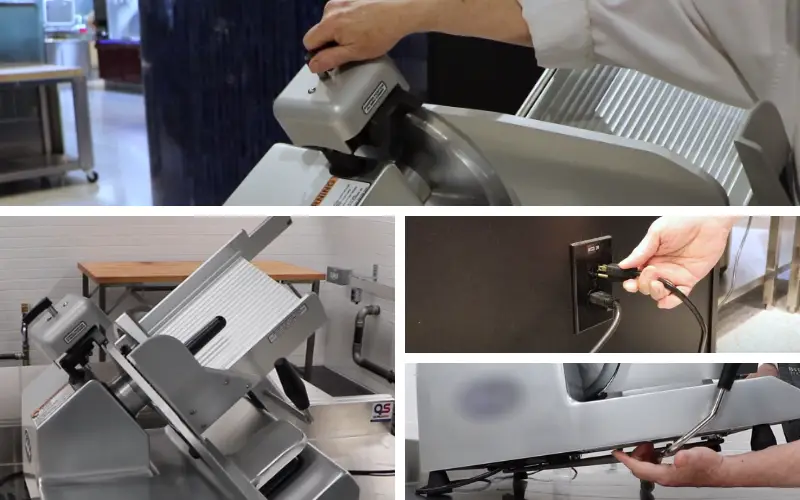
Slicer not starting: If your slicer doesn’t start, it could be a few different things. Check if the power cord is plugged in correctly and for any blown fuses or circuit breakers. Ensuring the motor has not overheated due to excessive slicing action is also a good idea.
Slicer won’t continue to run: When the meat slicer won’t continue running, it could be caused by a few different factors. Ensure the power switch is turned on and plugged in correctly. If the machine is still not working, inspect the blade area of the machine for clogged food particles or debris. Remove any debris with a toothbrush and inspect the blade for any signs of dullness or damage. If the blade appears in condition and the power switch is on, the motor may need to be replaced.
Slicer won’t cut through meat: This could happen if too much pressure is applied when pushing down on the food item or if the blade is dull. Try using less pressure when pushing down, and check the blade for any signs of wear and tear. If the blade appears in good condition, it could indicate that a new one needs to be installed.
Slicer overheats: If your slicer overheats, first make sure that there is adequate ventilation around the machine. If the room is too warm, consider installing an air conditioning unit. Additionally, check to see if the motor needs to be serviced or replaced, as this could be causing an overheating issue.
Slicer blade stops spinning: This can happen for a few reasons, including lack of lubrication or buildup of food particles on the blade. Make sure that the blade is properly lubricated with oil or food-grade grease. Additionally, check for any buildup of food particles and use a nylon brush or toothbrush to clean it off. If neither of these solutions works, you may need to replace the motor, as this might be causing the issue.
Difficult to slice: If the slices of meat are not coming out in even sizes, check that the blade is properly aligned and sharpened. The thickness of the slices can be adjusted by changing the thickness knob on the side of the machine. Additionally, ensure you use the correct blade type for your desired cut (i.e. a jagged blade for tougher cuts and a smoother blade for softer cuts). Another issue could be the meat itself; you may have difficulty slicing it if it is too tough or frozen.
Poor slice quality: The slices from your meat slicer should be even and uniform. Uneven or irregularly-sized slices can indicate an issue with the blade, such as being dull or improperly aligned. Dull blades are a common problem for meat slicers, so inspect the blade regularly to ensure it’s in good condition. If the blade needs sharpening, you can either sharpen it yourself or take it to a professional.
Slicer making noise: If your meat slicer is making strange noises, it could be a sign of a problem. Check the blade for any obstructions, such as pieces of food between the teeth. If nothing is visibly wrong, turn off the slicer and unplug it before removing the guard to inspect the blade further. In some instances, you may need to replace the blade. Another issue causing noise is if the motor isn’t properly connected. Ensure all the screws and bolts are securely in place and all wires are plugged in correctly.
Meat slicer won’t slide: If your meat slicer won’t slide, this is likely caused by a malfunctioning guide rod assembly. The guide rod assembly helps the slicing arm move along its track, so if it isn’t functioning properly, the slicer will become stuck in one place. To fix this issue, try realigning the guide rod assembly and ensuring all parts are securely tightened. If that doesn’t work, you may need to replace the assembly entirely.
The blade won’t sharpen: If your meat slicer’s blade isn’t sharpening properly, it could be because the knife has become dull over time. To fix this issue, try replacing the blade with a new one and oil it frequently. If you’re having trouble sharpening the blade, you may want to take your meat slicer to a professional who can sharpen the blade.
Motor won’t switch on: If your meat slicer’s motor doesn’t turn on, there could be several possible causes. First, you should check to ensure your slicer is to a power source and that the power switch is in the ” position. If it still switches on, there be an issue with the slicer’s wiring or electrical components. In this case, it’s best to contact a professional for assistance.
Too hard to push food chute: If your meat slicer is too hard to push food through the chute, it could be due to several potential causes. One cause could be a dull blade. Replacing the blade can make slicing easier and more efficient. Another potential cause is that the tension on the pusher plate might need adjusting to increase its flexibility. If the food pushed through is too thick, it can cause resistance. Adjust the thickness setting to a more suitable level and check for any buildup on the blade or pusher plate that could impede slicing. Inspect the chute for any blockages that could impede slicing.
Knife rubs against metal: The most common issue with meat slicers is when the knife rubs against the unit’s metal. A dull blade, incorrect assembly, or misalignment of the blade and machine frame can cause this. To fix this problem, check for a dull blade and replace it if necessary. Next, ensure that all unit components are properly assembled and that the blade and frame are aligned correctly. If all of these steps fail, contact a professional for further assistance.
Makes ragged cuts: One of the most common meat slicer problems is cutting uneven and ragged slices. This typically occurs when the blade is dull or not sharpened properly. To fix this, you need to remove any burrs that have developed on the blade, sharpen them and then realign them with the slicing plate. You should also check the tension on the blade and ensure it’s adjusted correctly before slicing If this doesn’t solve the problem, you may replace your meat slicer’s blade or have a professional service it. Another option is to invest in a-quality meat slicer that will cut evenly with minimal effort.
Slippy when wet: One of the most common meat slicer problems is that it can become slippery. This happens when food debris accumulates on the blade and other metal surfaces, making it difficult to grip or hold. To avoid this problem, clean the slicer after each use, including wiping down all metal parts with a damp cloth and some detergent.
Halting food trays: If your meat slicer is not properly adjusted, it can cause the food trays to stop suddenly. This happens often when the blade guard is improperly aligned with the blade or if the slicing arm is pushed too far back into the product-holding tray. To correct this issue, ensure all parts are in place and secure, including the food pusher, slicing arm guard, and blade guard. If necessary, adjust the settings of your slicer to ensure everything is lined up properly.
FAQs
Can you cut meat and cheese on the same slicer?
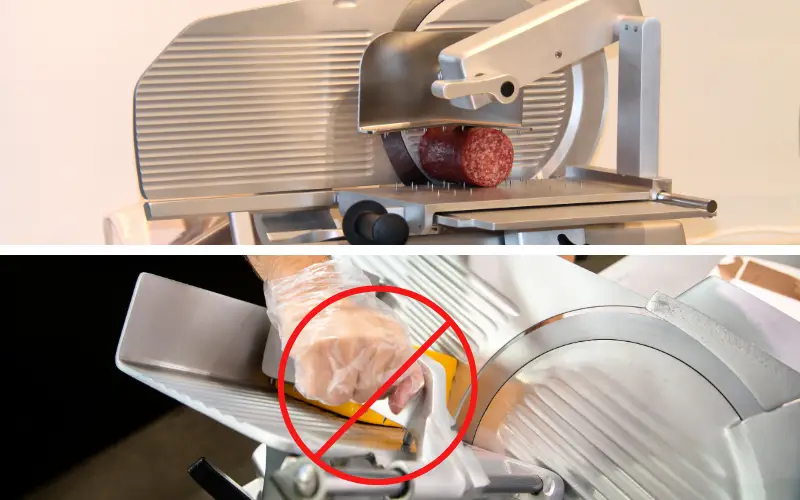
No, cutting meat and cheese on the same slicer is not recommended. Cheese tends to be softer than meat and can easily get stuck in the slicer’s blades, resulting in a clogged blade that could damage your machine. It is best practice to have separate slicers for each type of food item.
How often should you clean your meat slicer?
It is important to keep your meat slicer clean and well-maintained. To ensure the machine is functioning properly and safely, you should thoroughly clean it after each use. This includes removing food particles and disinfecting all parts that come into contact with food. Use a mild soap solution or specialized cleaning products to scrub away any residue, then rinse the machine with clean, hot water.
What should I look for when buying a meat slicer?
When shopping for a meat slicer, you’ll want to take the time to make sure you’re getting one that meets your needs. You should consider what size and type of slices you need, how powerful the motor is, and whether it has any additional useful features. Pay close attention to the materials used in construction so that you’re getting a slicer that is durable and long-lasting.
Conclusion
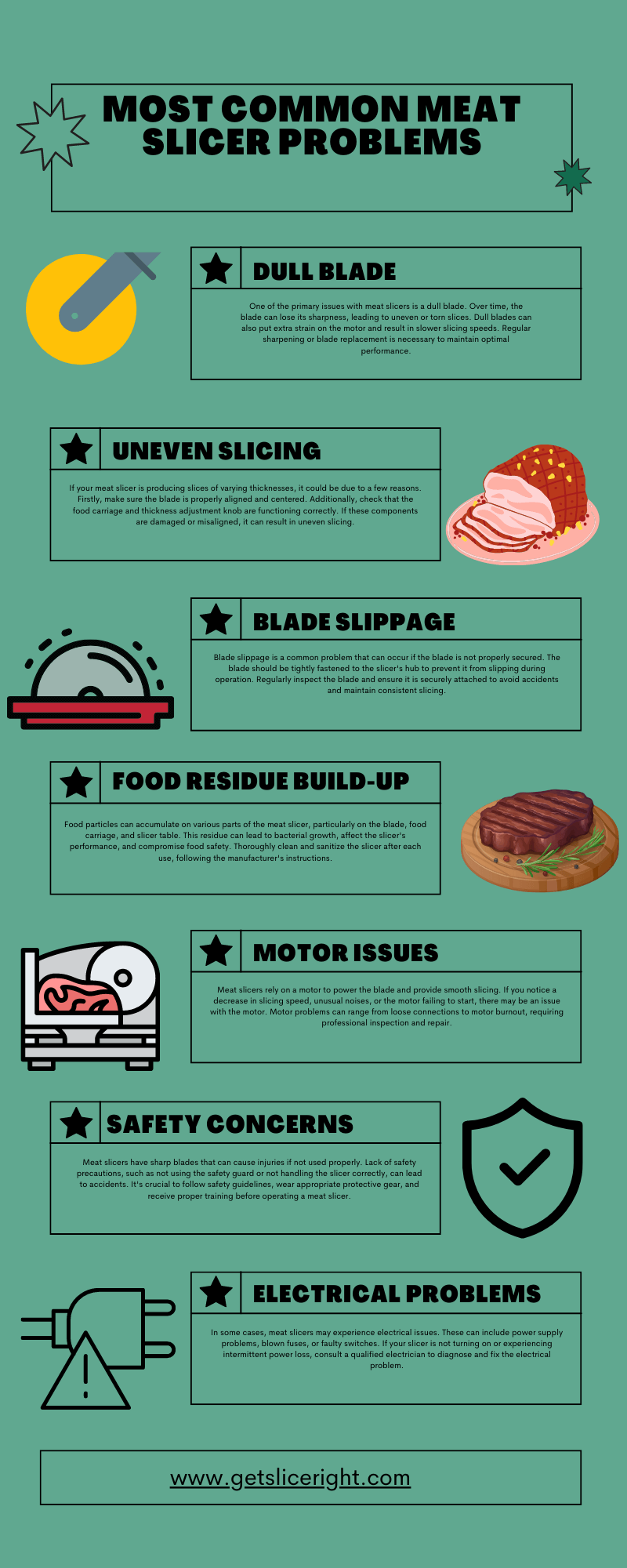
Meat slicers are an incredibly useful tool for any kitchen. They can quickly and easily slice meats, cheese, fruits, and vegetables into thin slices perfect for cooking and preparing meals. However, like machines with moving parts, they can suffer from problems. Fortunately, these issues often be fixed with a few steps. Common problems include a dull blade, malfunctioning motor, and clogged parts. Keeping your slicer clean and dry, replacing the blade regularly, and lubricating the moving parts can help prevent these problems from occurring in the first place. Taking care of your meat slicer will keep it working smoothly so you can enjoy slicing meats easily. Proper maintenance and regular servicing will ensure that your meat slicer is always up and running.

John Hebdon is a food enthusiast, passionate chef, and author of various articles and blog posts related to food and cooking. With a deep love for all things culinary, John’s blog serves as a platform to share his extensive kitchen experiences with a broader audience.
In addition to his culinary expertise, John has a flair for writing and a natural ability to share his passion for food with others. His articles and blog posts are informative, engaging, and packed with practical tips for readers of all skill levels.
As a food enthusiast and writer, John is always on the lookout for new and exciting culinary experiences. Whether it’s trying out a new restaurant, experimenting with a new recipe, or simply sharing a favorite dish with friends and family, John is always eager to explore and share the world of food with others.


